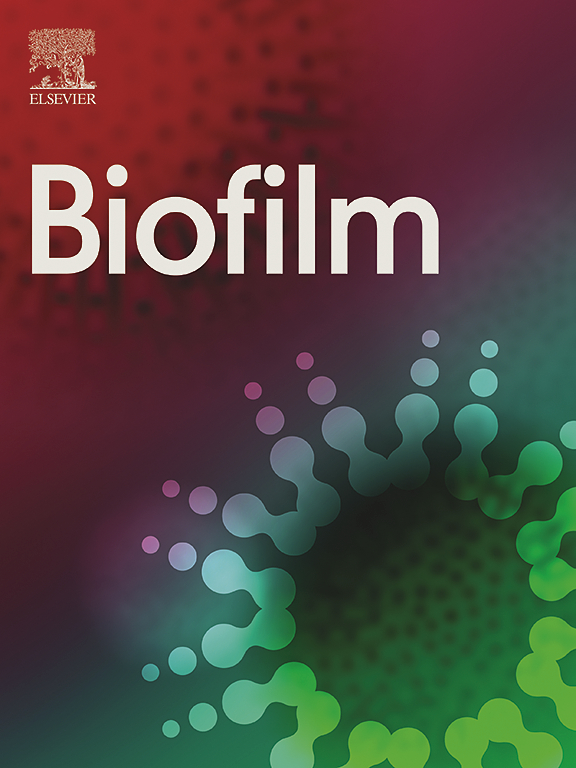Development of a tri-species wound model for studying fungal-bacterial interactions and antimicrobial therapies
IF 4.9
Q1 MICROBIOLOGY
引用次数: 0
Abstract
Chronic wounds are increasing in numbers and biofilm-producing bacteria are highly prevalent in these wounds and often create resilient polymicrobial infections. Moreover, estimates suggest that up to 23 % of wounds contain fungi, particularly Candida albicans. Currently, inter-kingdom chronic wound models are scarce; thus, this study presents one of the few in vitro models that incorporate both bacterial and fungal species in a wound-relevant environment, addressing a critical gap in current biofilm research. The newly developed model contained the commonly isolated wound bacteria Pseudomonas aeruginosa and Staphylococcus aureus, and the fungus Candida albicans. Inter-species interactions were investigated through selective plate counting and pH and oxygen measurements, as well as confocal microscopy. Investigations were carried out before and after exposure to commonly used clinical antimicrobial treatments, including silver-infused bandages. When grown in a tri-species consortium, P. aeruginosa and S. aureus exhibited a higher tolerance towards silver-infused bandages than when they were grown individually. This suggests that C. albicans plays a protective role for the bacteria. In addition, the treatment also caused a shift in species ratios, moving from a P. aeruginosa-dominated consortium to a S. aureus-dominated consortium. Moreover, confocal microscopy revealed a change in biofilm architecture when comparing single-species models to tri-species models. Finally, we observed that silver-infused bandages increased the pH in the tri-species model as well as partially restoring the oxygenation within the wound model. In conclusion, our novel model exemplifies how inter-kingdom interactions in fungal-bacterial infections can complicate both the microenvironment and treatment efficacy.
用于研究真菌-细菌相互作用和抗菌治疗的三种伤口模型的建立
慢性伤口的数量正在增加,产生生物膜的细菌在这些伤口中非常普遍,经常造成有弹性的多微生物感染。此外,据估计,高达23%的伤口含有真菌,特别是白色念珠菌。目前,跨王国慢性伤口模型很少;因此,本研究提出了在伤口相关环境中结合细菌和真菌物种的少数体外模型之一,解决了当前生物膜研究中的一个关键空白。新建立的模型含有常见的伤口细菌铜绿假单胞菌和金黄色葡萄球菌,以及真菌白色念珠菌。通过选择平板计数、pH值和氧气测量以及共聚焦显微镜来研究物种间的相互作用。在接触常用的临床抗微生物治疗(包括浸银绷带)前后进行了调查。当在三种联合体中生长时,铜绿假单胞菌和金黄色葡萄球菌对注入银的绷带的耐受性比单独生长时更高。这表明白色念珠菌对细菌起着保护作用。此外,该处理还引起了物种比例的变化,从铜绿假单胞菌为主的联合体转变为金黄色葡萄球菌为主的联合体。此外,共聚焦显微镜在比较单物种模型和三物种模型时发现了生物膜结构的变化。最后,我们观察到银注入绷带增加了三种模型的pH值,并部分恢复了伤口模型内的氧合。总之,我们的新模型说明了真菌-细菌感染中的王国间相互作用如何使微环境和治疗效果复杂化。
本文章由计算机程序翻译,如有差异,请以英文原文为准。
求助全文
约1分钟内获得全文
求助全文

 求助内容:
求助内容: 应助结果提醒方式:
应助结果提醒方式:


